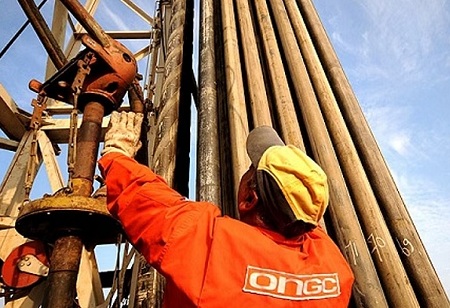ONGC, the largest oil and gas producer in India, will spend more than USD 2 billion drilling 103 wells, a record, on its main gas-bearing asset in the Arabian Sea as it pivots a turnaround plan that would increase production by 100 million tonnes. Three key offshore assets owned by Oil and Natural Gas Company (ONGC) account for the majority of the company's 2021–2022 production of 21.7 million tonnes of oil and 21.68 billion cubic metres of gas: Mumbai High, Heera and Neelam, and Bassein and Satellite.
ONGC Director (Offshore) Pankaj Kumar, "We have approved a record 103 locations for drilling wells on the Bassein and Satellite (B&S) assets over the next 2-3 years." The wells will assist increase output by tapping smaller, previously untapped reserves. During the course of the field, "we estimate that this development drilling will boost production by about 100 million tonnes of oil and oil equivalent gas," he added. "About USD 2 billion will be invested in drilling and facilities." Two-thirds of the oil and gas produced in the nation is produced by ONGC, thus any further production would help the nation reduce its reliance on
imports to fulfil its energy demands. Around 85% of the crude oil needed to make gasoline and diesel in refineries is imported into India, as well as over 50% of the natural gas used to generate electricity, make fertiliser, create CNG for car fuel, and supply cooking gas to homes.
To help reduce the USD 115 billion import bill, the government has been pressuring state-owned businesses to step up efforts to increase domestic output. Because its fields are old and ageing, ONGC has recorded a steady reduction in output for more than ten years. But, the company has now pulled itself together and is working on a holistic asset base plan rather than a field-centric approach.
B&S Asset, according to Kumar, possesses a number of fields, including the important Bassein gas field, D1, and Tapti-Daman. Currently, these generate between 55,000 and 66,000 barrels of oil per day (2.8 million tonnes) and 28 million standard cubic metres of gas per day. "We have done a reservoir profiling for the entire asset to design the drilling campaign." Drilling new wells will increase production, which will counteract the natural drop in older wells and increase output overall.
Gas production is expected to increase by 6-7 mmscmd at the Daman field alone, while oil production at the Tapti field might nearly double to 30,000 bpd. For the revitalization of the other two assets in the western offshore, ONGC will use a similar strategy. The sixth phase of the rehabilitation of Mumbai High, India's most productive oil and gas field, is in the conceptualization stage, while the fourth phase is virtually finished.
A reversal of the production reduction from the current fiscal year is predicted for ONGC. Production of gas and crude oil are expected to increase in the current fiscal year (2022-23) to 22.099 bcm and 22.823 million tonnes, respectively. Oil production will increase to 24.636 million tonnes in the following fiscal year and to 25.689 million tonnes in 2024–25. The production of natural gas is expected to increase to 25.685 bcm in 2023–2024 and 27.529 bcm the following year.
